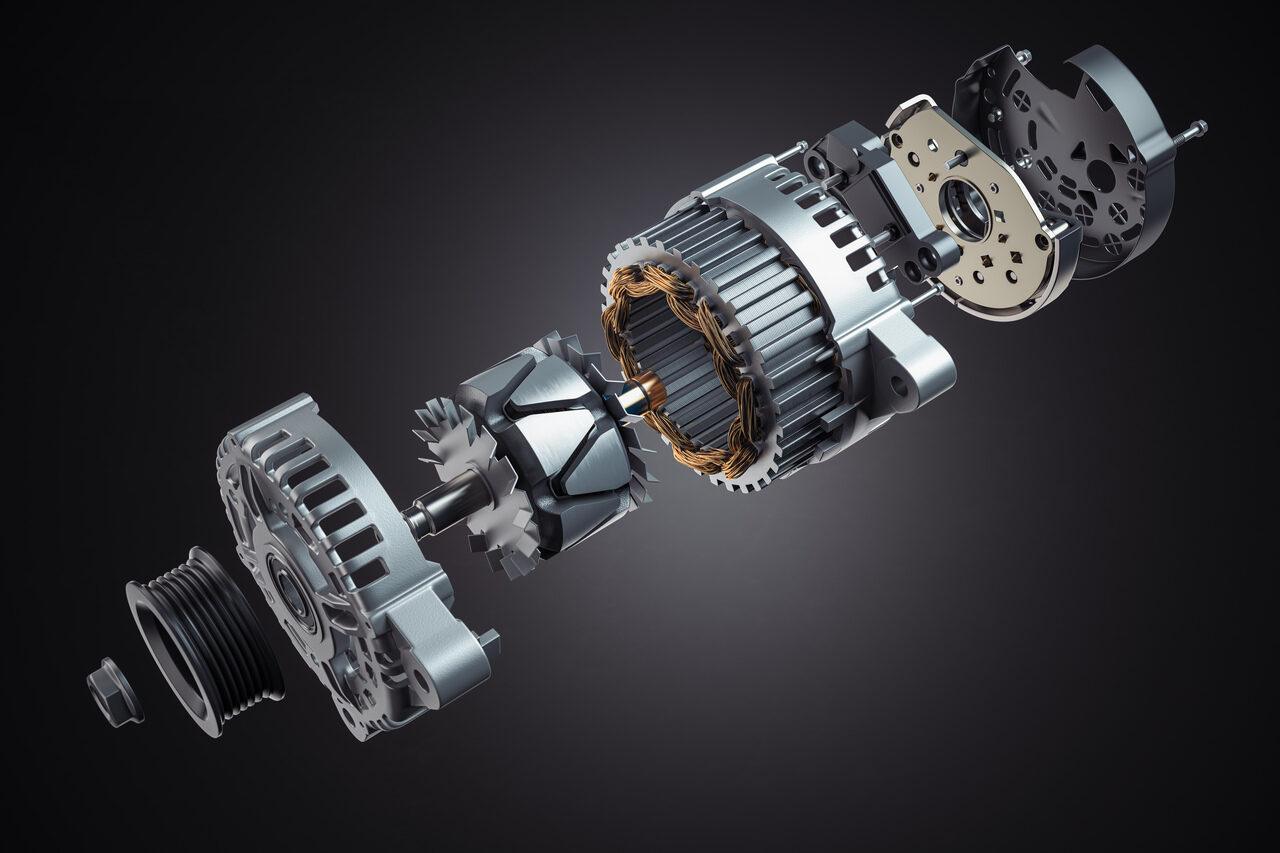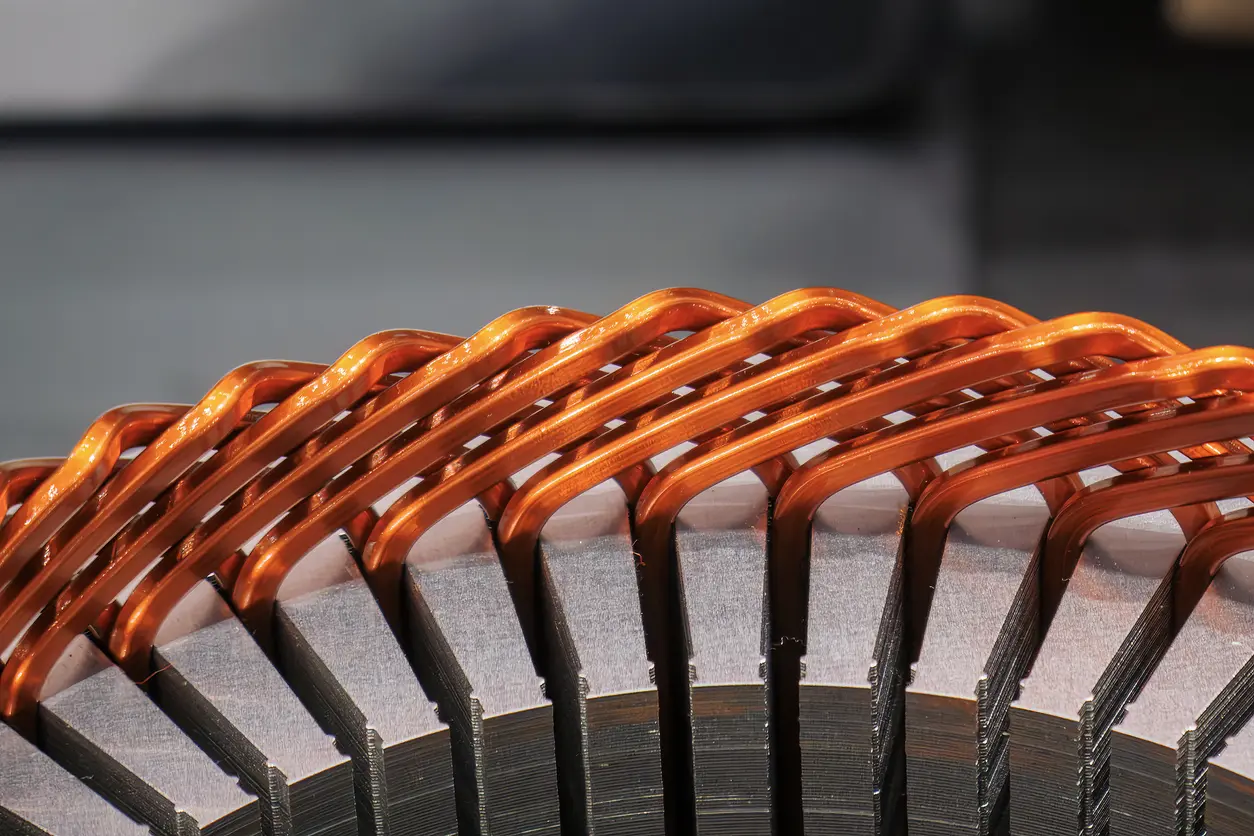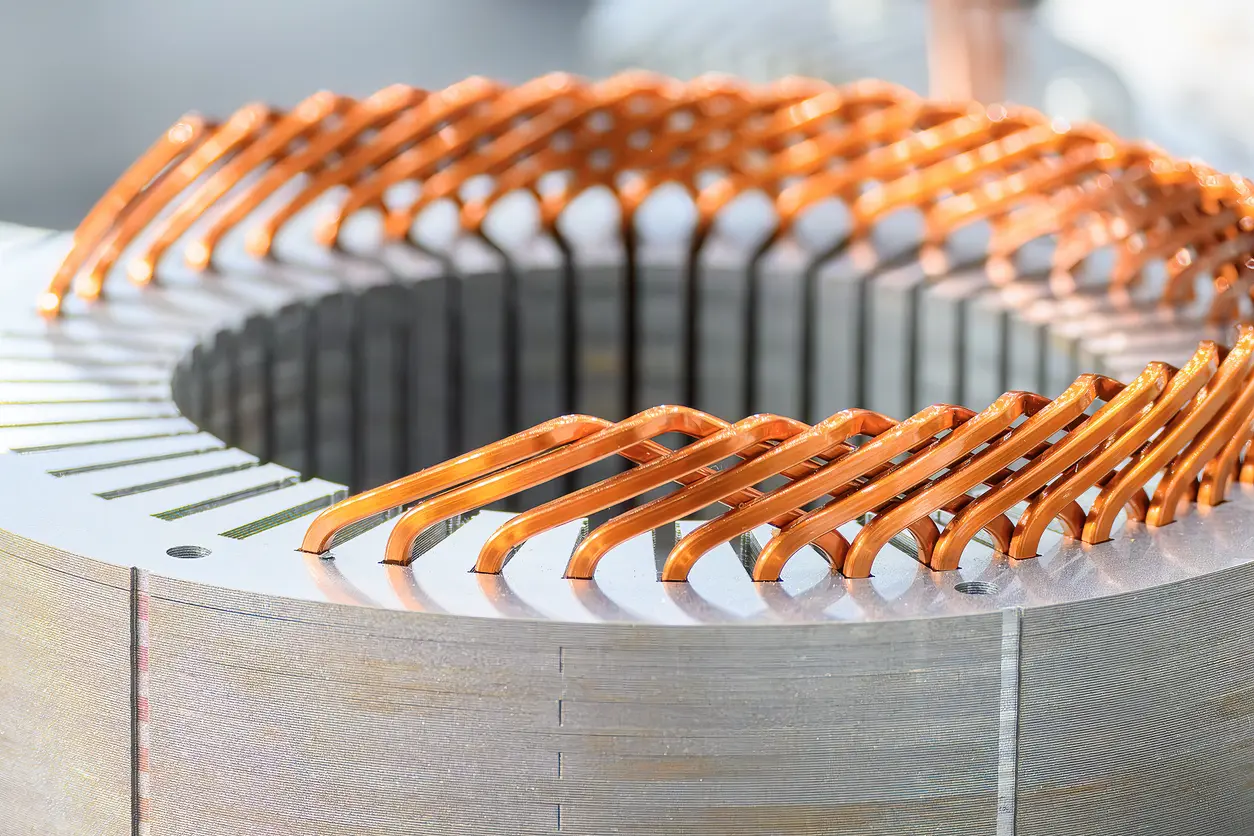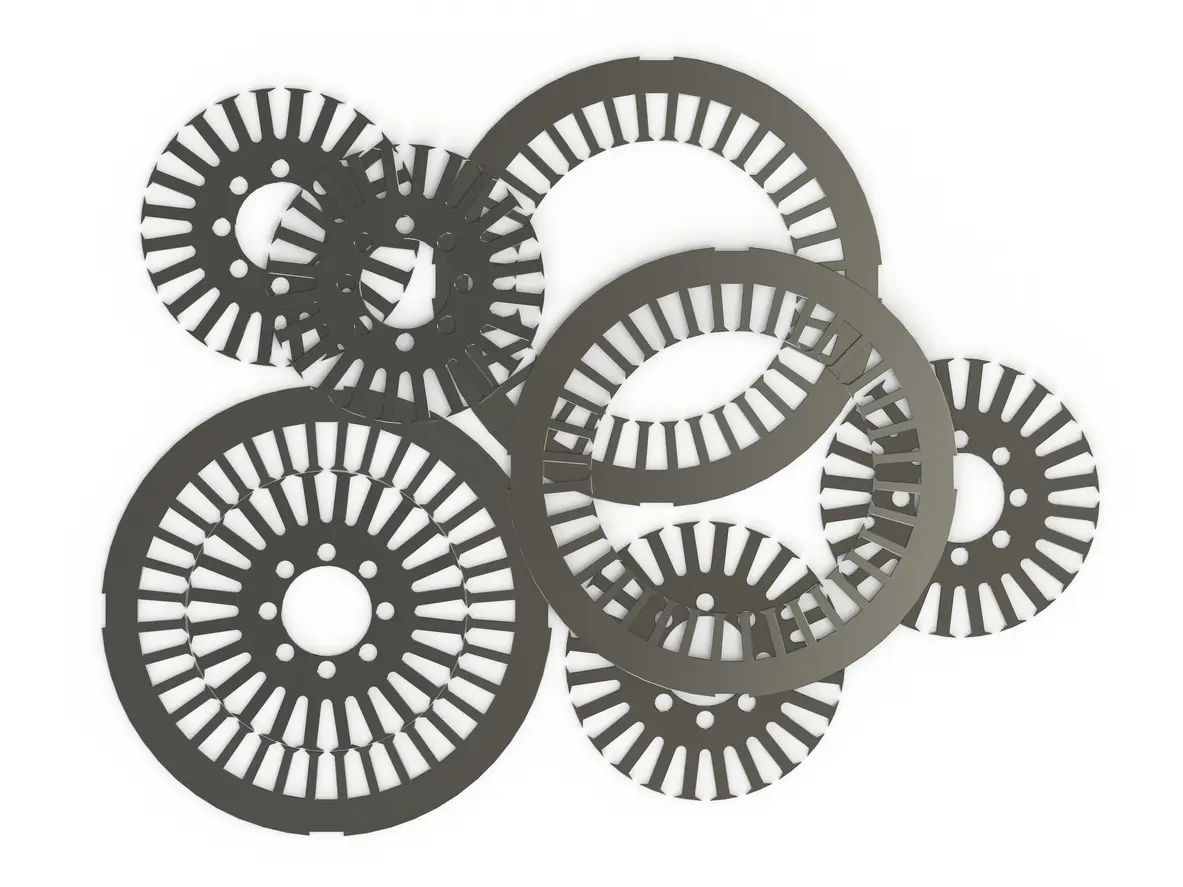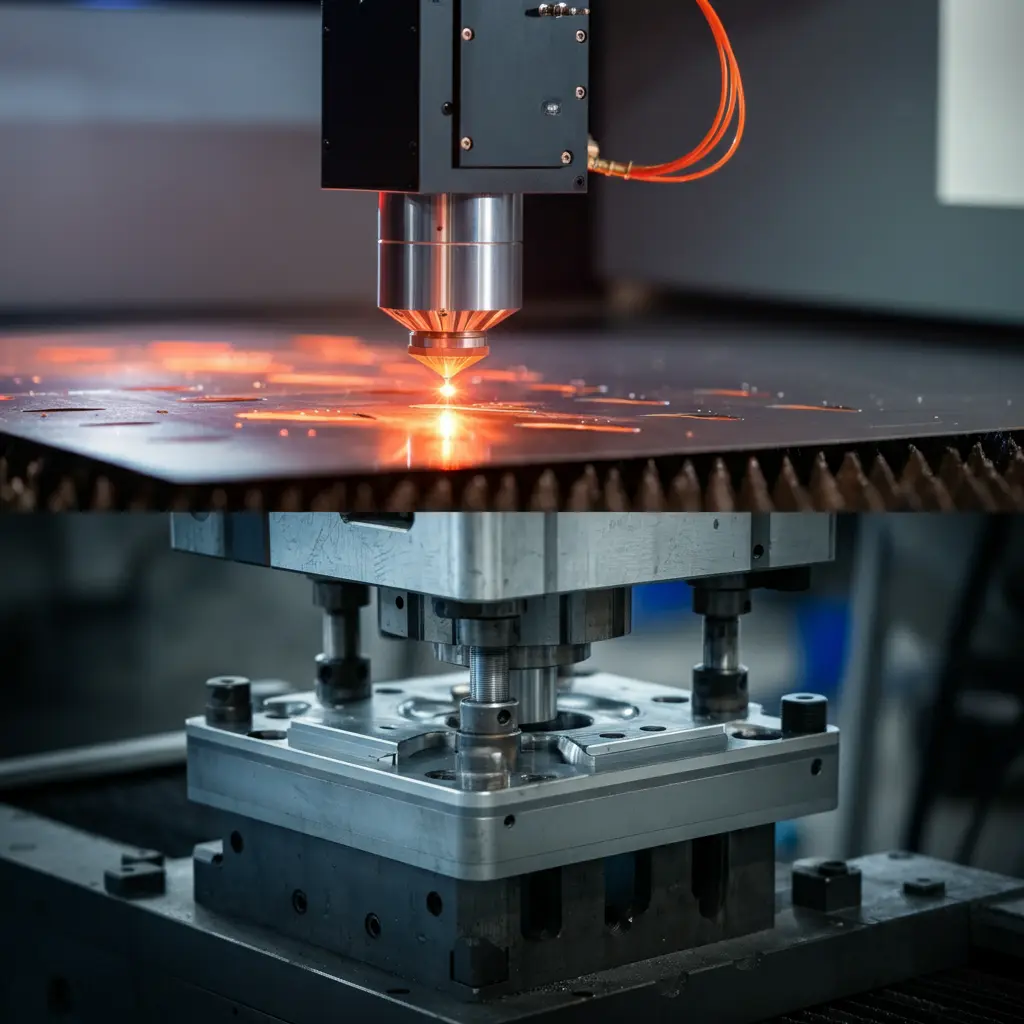Introduction
Permanent Magnet (PM) motors are vital components in today’s advanced technologies, powering everything from electric vehicles to industrial machinery. At the heart of these motors lies the PM core lamination, a critical element that directly influences efficiency, performance, and longevity. Choosing high-quality PM core lamination ensures optimal motor operation, making it essential to understand what features to prioritize. In this blog post, we’ll explore the top eight features to look for in quality PM core lamination, providing you with the knowledge to make informed decisions for your applications.
1. Material Quality
The quality of materials in PM core lamination is fundamental to achieving high motor efficiency and durability. In Permanent Magnet (PM) motors, the core lamination directs magnetic flux and reduces energy losses, making material selection a key factor. This section explores two critical elements: high-grade electrical steel and thin laminations.
1.1 High-Grade Electrical Steel
High-grade electrical steel is widely used in PM core lamination for its ability to minimize core losses, such as hysteresis and eddy currents. Often enhanced with silicon, this steel improves magnetic permeability and resistivity, reducing energy waste as heat. For instance, a motor manufacturer once improved efficiency by 5% after adopting silicon-alloyed steel, highlighting its practical impact. These properties make it a reliable choice for enhancing motor performance across various applications.
1.2 Thin Laminations
Thin laminations in PM core lamination further reduce eddy current losses by limiting the thickness of steel sheets. While this boosts efficiency—crucial for applications like electric vehicles—it demands precise manufacturing, potentially raising costs. The trade-off between performance gains and production complexity is a key consideration. Thinner layers, though challenging, often prove worthwhile for high-performance motors.
In essence, material quality underpins the effectiveness of PM core lamination, balancing efficiency and practicality through advanced materials and design.
2. Precision in Manufacturing
Precision in manufacturing is a cornerstone of producing high-quality PM core lamination. It ensures each lamination adheres to exact specifications, directly impacting motor performance and efficiency.
2.1 Tight Tolerances
In PM core lamination, tight tolerances are vital for quality. This involves cutting and shaping each lamination with minimal deviation from design dimensions. Such precision reduces air gaps between laminations, which, if present, can disrupt magnetic flux and lower efficiency. For instance, in high-speed motors, even minor misalignments may lead to noticeable performance declines. To achieve this, manufacturers employ advanced measuring tools and strict quality control processes, ensuring consistent results across production runs.
2.2 Advanced Cutting Techniques
The cutting method used in PM core lamination production greatly affects its performance. Older techniques often leave burrs or uneven edges, risking electrical shorts or higher energy losses. Modern methods, such as laser cutting or precision stamping, deliver clean, burr-free edges that enhance functionality. These techniques also support complex designs that optimize magnetic flux paths. A real-world example shows a manufacturer using laser cutting achieving a 10% reduction in core losses compared to traditional approaches, demonstrating tangible benefits.
3. Insulation Quality
In PM core lamination, insulation quality plays a vital role in ensuring motor performance and durability. Effective insulation prevents electrical shorts between laminations, which can lead to energy losses or motor failure. This section explores two key aspects: high-quality insulation coatings and uniform coating application.
3.1 High-Quality Insulation Coatings
High-quality insulation coatings are essential for PM core lamination to maintain electrical integrity. Typically, advanced organic or inorganic varnishes are used, providing a robust barrier against shorts. These coatings are designed to withstand high temperatures and mechanical stresses encountered during motor operation. For instance, a well-formulated varnish can endure continuous exposure to heat without degrading, contributing to the long-term reliability of the motor. The choice of materials directly impacts efficiency, making it a critical consideration in lamination design.
3.2 Uniform Coating Application
Equally important is the uniform application of insulation coatings. Inconsistent coverage may create weak spots, increasing the risk of electrical failures over time. A real-world example illustrates this: a motor manufacturer experienced premature breakdowns due to uneven insulation but saw a 20% increase in motor lifespan after adopting a supplier with precise coating techniques. For PM core lamination, selecting suppliers adhering to standards like ASTM or IEC ensures consistent quality and performance.
4. Magnetic Properties
Magnetic properties are fundamental to the performance of PM core laminations, directly influencing the efficiency and effectiveness of electric motors. These properties determine how well the lamination conducts magnetic flux and minimizes energy losses, both of which are critical for optimal motor operation.
4.1 High Magnetic Permeability
High magnetic permeability is a vital characteristic of PM core laminations. It refers to the material’s ability to conduct magnetic flux efficiently, which enhances motor performance. By enabling a stronger magnetic field with less energy input, high permeability improves power output and reduces waste. This is particularly beneficial in applications like precision robotics, where even small gains in efficiency can lead to noticeable improvements in control and responsiveness.
4.2 Low Core Loss
Core loss in PM core laminations comprises hysteresis and eddy current losses, both of which affect motor efficiency. Hysteresis loss arises from repeated magnetization reversals, while eddy currents are induced by fluctuating magnetic fields. Careful material selection and design can minimize these losses, optimizing energy use. For example, a leading electric vehicle manufacturer reported a 10% efficiency boost after adopting PM core laminations with reduced core losses, highlighting the practical impact of this property.
In summary, PM core laminations with high magnetic permeability and low core loss are essential for efficient, reliable motor performance.
5. Thermal Management
Effective thermal management is a cornerstone of PM core lamination design, influencing motor efficiency, performance, and durability. As motors generate heat during operation, inadequate management can compromise efficiency and lead to early failure. This section examines two vital elements: heat dissipation capabilities and thermal stability.
5.1 Heat Dissipation Capabilities
Heat dissipation determines how effectively PM core laminations transfer heat away from the motor core. Materials with high thermal conductivity, such as silicon steel alloys, facilitate this process by conducting heat efficiently. Incorporating design features like cooling channels or fins can further enhance airflow and cooling performance. For instance, a study by the National Renewable Energy Laboratory (NREL) demonstrated that motors with optimized heat dissipation in their laminations ran 15% cooler under load, boosting efficiency by 5%. Such findings highlight the practical advantages of advanced heat dissipation strategies in real-world motor applications.
5.2 Thermal Stability
Thermal stability ensures that PM core laminations retain their structural and magnetic properties across temperature variations. Materials with low thermal expansion coefficients, like select silicon steels, resist deformation under heat stress. Advanced coatings may also preserve magnetic performance at higher temperatures. Testing, such as accelerated aging simulations, verifies durability under thermal loads, which is critical for applications like automotive motors facing fluctuating conditions.
In essence, robust thermal management enhances motor reliability and efficiency through careful material and design choices.
6. Structural Integrity
Structural integrity is a cornerstone of PM core lamination, ensuring electric motors remain durable and dependable over time. This section explores two key factors: mechanical strength and dimensional stability, both critical for optimal motor performance.
6.1 Mechanical Strength
Mechanical strength in PM core lamination is vital to endure the operational stresses motors face, such as rotation, vibration, and torque. Without sufficient strength, laminations risk wear or failure, compromising motor reliability. High-strength materials, like cold-rolled electrical steel, are commonly selected for their resilience. For example, in industrial motors, these robust laminations have been noted to lower maintenance frequency and enhance longevity, proving their value in high-demand settings. This careful material choice supports consistent performance under challenging conditions.
6.2 Dimensional Stability
Dimensional stability in PM core lamination ensures that components retain their shape and size despite temperature shifts or mechanical stress. This stability prevents warping, which could reduce efficiency or cause failures. Materials such as silicon steels, known for low thermal expansion, are often used to maintain dimensions effectively. In automotive motors, exposed to broad temperature ranges, dimensionally stable laminations contribute to reliable operation. This aspect of PM core lamination design underscores its role in sustaining motor efficiency and durability over extended periods.
7. Customization Options
Customization in PM core lamination plays a vital role in meeting the diverse needs of electric motor applications. From electric vehicles to industrial machinery, tailored laminations can enhance performance by addressing specific torque, speed, or efficiency demands. This adaptability offers a practical edge in motor design.
7.1 Tailored Designs
Tailored designs allow PM core lamination to be fine-tuned through adjustments in slot shapes, sizes, or geometry. For example, a high-torque motor might use a unique slot configuration, distinct from one built for speed. In the automotive sector, a custom slot design in PM core lamination has been shown to boost motor efficiency by up to 8%, illustrating the potential of precise modifications.
7.2 Scalability
Scalability ensures PM core lamination can adapt to varying production needs, from small prototype batches to large-scale runs. Techniques like laser cutting or precision stamping support this flexibility, maintaining quality across volumes. Collaboration with clients further refines the process, aligning solutions with specific goals. While not a guarantee of superiority, customized PM core lamination often provides a competitive advantage in efficiency-driven markets. Consider exploring these options for your next project.
8. Quality Control and Testing
Quality control and testing are vital for ensuring that PM core lamination meets the stringent requirements of electric motor performance and durability. These processes confirm that laminations achieve optimal efficiency while reducing risks like core losses or motor failure. This section covers rigorous testing procedures and adherence to industry standards.
8.1 Rigorous Testing Procedures
Testing for PM core lamination includes magnetic property evaluations, dimensional accuracy checks, and insulation resistance tests. Magnetic property evaluations measure permeability and core losses to ensure energy efficiency. Dimensional checks verify precise cuts, preventing air gaps that impair magnetic flux. Insulation resistance tests confirm coatings prevent electrical shorts. For instance, a prominent motor manufacturer reduced assembly issues by 15% through stricter dimensional checks, enhancing motor smoothness. These tests uphold consistent quality across batches.
8.2 Certifications and Standards
Compliance with standards like ISO 9001 or IEC guidelines signifies reliable PM core lamination production. ISO 9001 ensures consistent manufacturing processes, critical for applications in medical or aerospace sectors where reliability is paramount. Adhering to these standards reassures customers of product dependability. Such certifications reflect a commitment to quality, enhancing trust in the laminations’ performance.
In conclusion, thorough quality control and testing underpin the reliability and efficiency of PM core lamination, making them indispensable for high-performance motors.
Conclusion
Selecting the right PM core lamination is critical for optimizing electric motor performance and efficiency. Key features to consider include material quality, which reduces energy losses; precision manufacturing, ensuring optimal magnetic flux; robust insulation, preventing electrical shorts; high magnetic permeability, enhancing power output; effective thermal management, prolonging motor lifespan; structural integrity, providing durability; customization, meeting specific application needs; and rigorous quality control, guaranteeing consistency. These attributes play a vital role in applications like industrial machinery and electric vehicles, delivering both reliability and efficiency. For personalized guidance, feel free to contact our team.
Further Reading:

